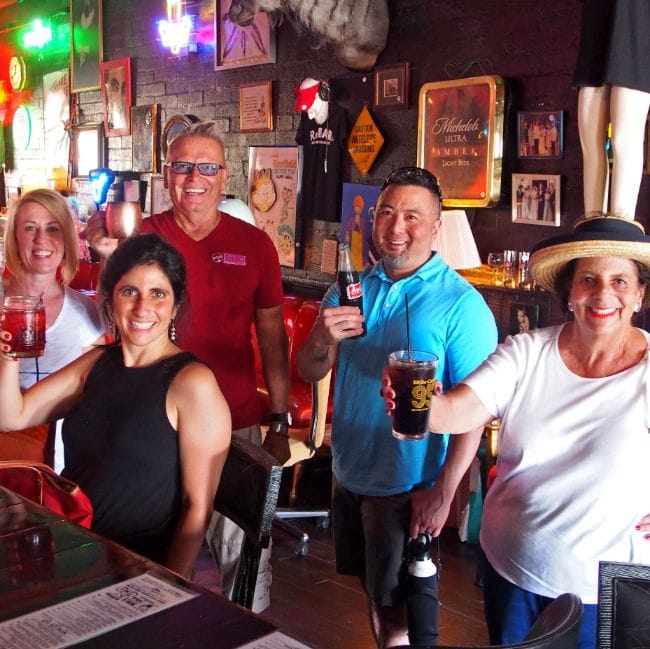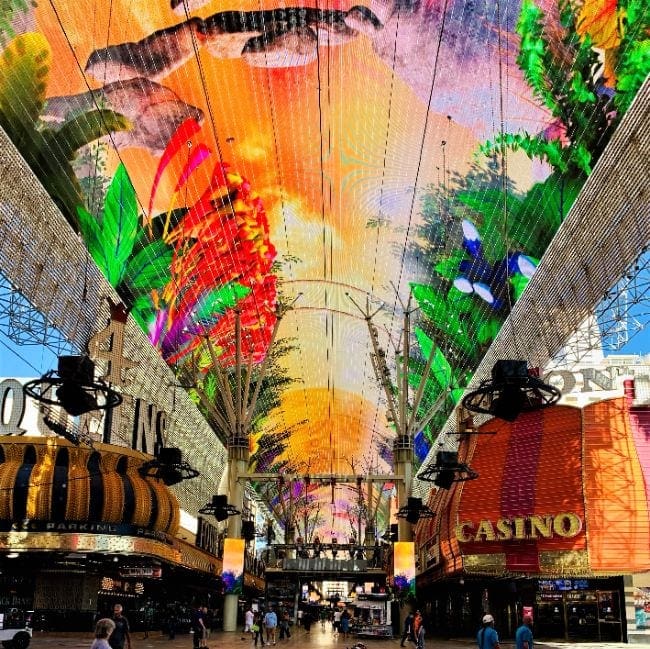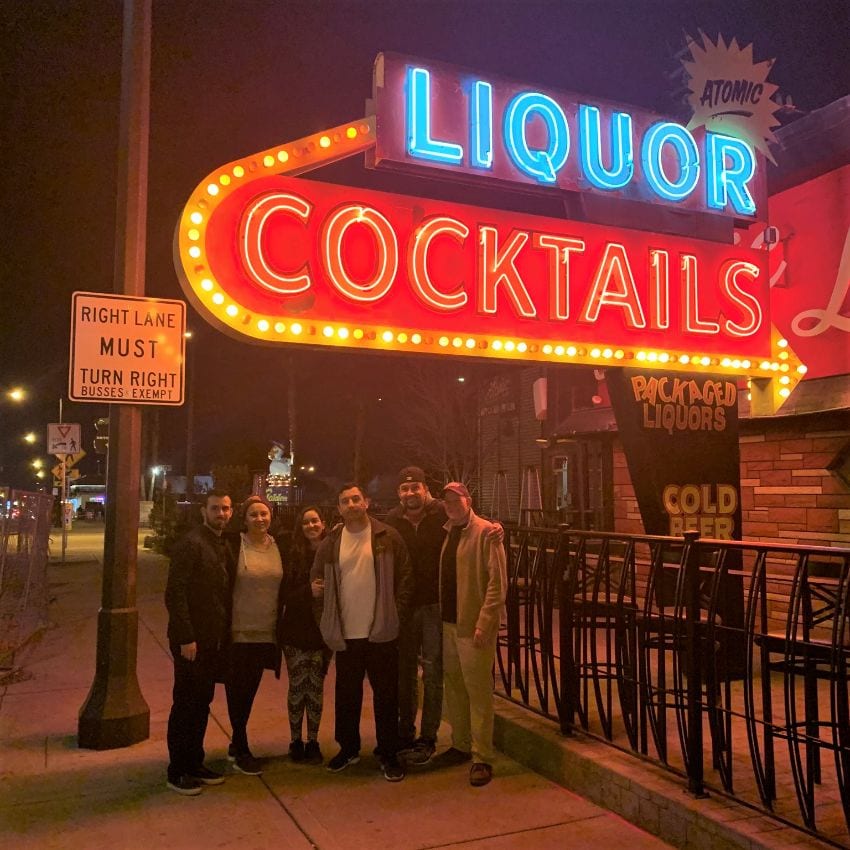New York has its skyscrapers. Portland has its bridges. Las Vegas has its neon signs. No other city in America ever built an electric environment on the scale and complexity as Las Vegas. Over time, its grand architecture of light, neon, and spectacle propelled the city into the public imagination.
Commercial neon was invented in Paris in 1910, and two decades later the first neon signs arrived in Las Vegas. As a sensational new medium using light and technology oriented to advertising and to the roadside, it proved a perfect match for a small Western desert metropolis with big ideas.
By the 1930s, a handful of sign companies were designing and fabricating neon signs on Fremont Street, Main Street, and Las Vegas Boulevard. Local businesses – cafes, hotels, and pharmacies – displayed small scale signs while the new gambling halls featured towering blade signs and elaborate neon marquees.
Once the large casino hotels arrived on the Strip in the 1950s and 1960s, the design and fabrication of neon signs reached new heights of imagination and scale, unparalleled in the built urban environment anywhere in America. Strip hotels, compared to Downtown, were expansive in size, set back from the street, situated on large tracks of land while separated in distance from other nearby properties, and they were designed to be viewed from the automobile. Consequently, free-standing roadside signs gained prominence, and many soared skyward to become the tallest in the world, like the 1970s Sahara Hotel sign at 220 feet. Las Vegas sign companies with highly creative design departments catered to the competitive nature of Strip properties that had big budgets to outdo and outperform competitors. Plus, casino hotels were aligned on a linear Strip, a kind of “visual raceway stage-set of 4 miles” and that proximity intensified the fierce competition.
Meanwhile, on the 4 blocks of Fremont Street Downtown, with its hotels nestled curbside close to the street, the free-standing pole sign never came into play. But in time, a major Vegas-centric design strategy based on scale emerged, both on the Strip and Downtown, and electric neon signs got so large they encompassed the entire front of buildings, so much so, that the building was the sign, and the sign became the building. An innovative example from the 1960s was the Golden Nugget signage that wrapped the whole front of the casino in a dazzling display of bravado. In Las Vegas sign lingo these light-infused structures and their attendant neon pylons became known, as “spectaculars.” Such landmarks included the Dunes, the Flamingo Hotel, the Tropicana, Caesars, and the Stardust whose magnificent sign was often referred to as the “Queen of the Strip.” Downtown’s most spectacular signs intersected at the Mid-Century Modern corner of Casino Center and Fremont: The Golden Nugget, Binion’s Horseshoe, The 4 Queens, and Fremont Hotel. But Downtown’s most famous and enduring neon sign is Vegas Vic, the 50-foot tall, lanky cowboy from 1951, offering a big welcome to Las Vegas as “still a western town.”
In time, vacuum-tube neon signs gave way to electronic and LED technologies, and the design of the building assumed prominence: the building became more the message and the brand, rather than the sign. Today, there is little original neon remaining on the Strip, the best example is the famed Welcome To Fabulous Las Vegas sign of 1959, designed by Betty Willis. But neon still lives Downtown – from the historic El Cortez to Circa Resort – where a dozen casino hotels dating through the last half century to the present are displaying the splendor and razzle-dazzle of light architecture and neon.



